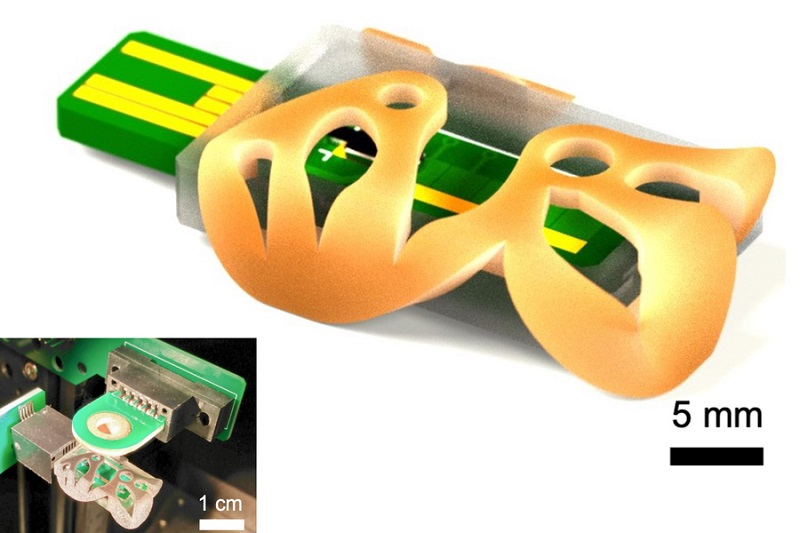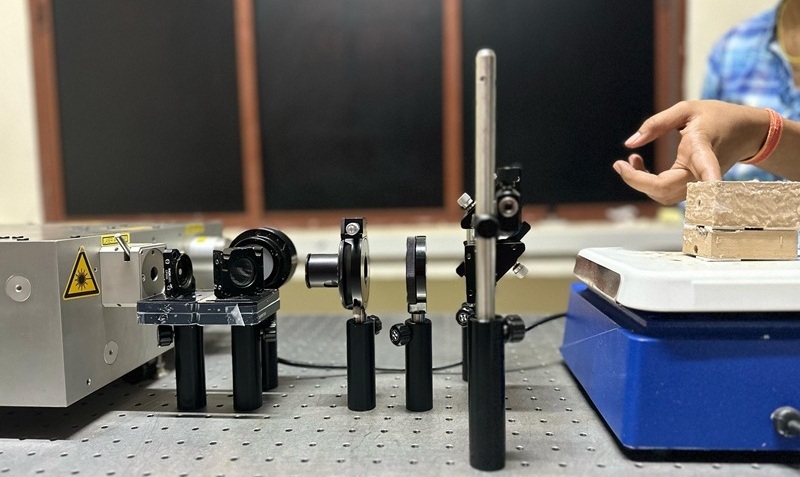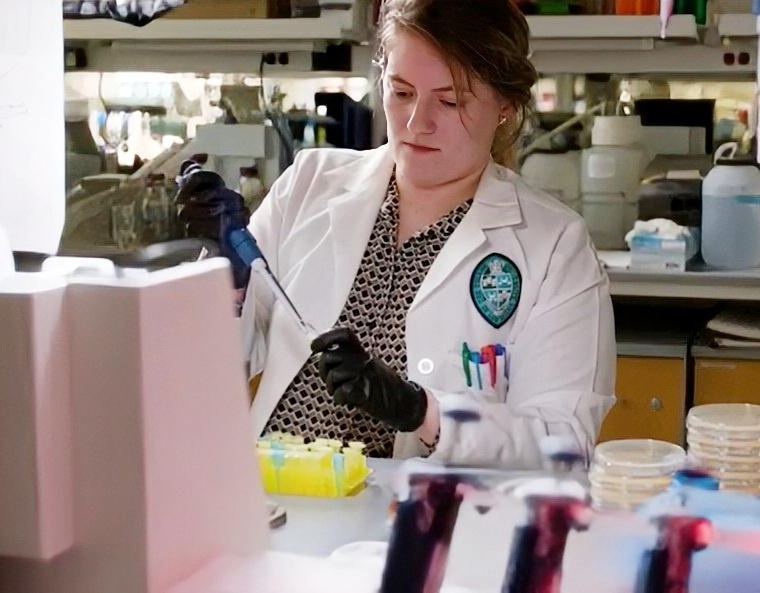3D Printed Point-Of-Care Mass Spectrometer Outperforms State-Of-The-Art Models
|
By LabMedica International staff writers Posted on 10 Apr 2024 |

Mass spectrometry is a precise technique for identifying the chemical components of a sample and has significant potential for monitoring chronic illness health states, such as measuring hormone levels for hypothyroidism patients. However, the high cost of mass spectrometers, often reaching several hundred thousand dollars, restricts them to labs that require the transportation of blood samples for analysis, thereby complicating chronic disease management. Now, researchers have taken a big step towards building inexpensive hardware that could make mass spectrometry local. The team has used 3D printing to create a low-cost ionizer, a vital component of the mass spectrometer, that can deliver twice as good a performance as its high-end counterparts.
The device developed at MIT (Cambridge, MA, USA) spans just a few centimeters and is designed for mass production, enabling its integration into mass spectrometers through robotic assembly method. This also makes it more economical than traditional ionizers which often demand manual assembly, expensive hardware to interface with the mass spectrometer, or construction in a semiconductor clean room. By using 3D printing instead, along with some clever optimizations, the researchers produced a low-cost electrospray emitter that can outperform state-of-the-art mass spectrometry ionizers.
The optimizations allow the electrospray emitter to operate at 24% higher voltage than state-of-the-art versions, thereby more than doubling its signal-to-noise ratio. The method of batch processing could drastically reduce the cost of each emitter, paving the way for affordable point-of-care mass spectrometry. The team is now focused on developing a prototype that integrates their ionizer with a 3D-printed mass filter, another critical component of the device. Additionally, they are advancing the development of 3D-printed vacuum pumps, a key challenge in 3D printing an entire compact mass spectrometer.
“Our big vision is to make mass spectrometry local. For someone who has a chronic disease that requires constant monitoring, they could have something the size of a shoebox that they could use to do this test at home. For that to happen, the hardware has to be inexpensive,” said Luis Fernando Velásquez-García, a principal research scientist in MIT’s Microsystems Technology Laboratories.
Related Links:
MIT
Latest Clinical Chem. News
- Carbon Nanotubes Help Build Highly Accurate Sensors for Continuous Health Monitoring
- Paper-Based Device Boosts HIV Test Accuracy from Dried Blood Samples
- AI-Powered Raman Spectroscopy Method Enables Rapid Drug Detection in Blood
- Novel LC-MS/MS Assay Detects Low Creatinine in Sweat and Saliva
- Biosensing Technology Breakthrough Paves Way for New Methods of Early Disease Detection
- New Saliva Test Rapidly Identifies Paracetamol Overdose
- POC Saliva Testing Device Predicts Heart Failure in 15 Minutes

- Screening Tool Detects Multiple Health Conditions from Single Blood Drop
- Integrated Chemistry and Immunoassay Analyzer with Extensive Assay Menu Offers Flexibility, Scalability and Data Commutability
- Rapid Drug Test to Improve Treatment for Patients Presenting to Hospital
- AI Model Detects Cancer at Lightning Speed through Sugar Analyses
- First-Ever Blood-Powered Chip Offers Real-Time Health Monitoring
- New ADLM Guidance Provides Expert Recommendations on Clinical Testing For Respiratory Viral Infections
- POC Biomedical Test Spins Water Droplet Using Sound Waves for Cancer Detection
- Highly Reliable Cell-Based Assay Enables Accurate Diagnosis of Endocrine Diseases
- New Blood Testing Method Detects Potent Opioids in Under Three Minutes
Channels
Molecular Diagnostics
view channel
Rapid Diagnostic Test to Halt Mother-To-Child Hepatitis B Transmission
Hepatitis B, an inflammation of the liver caused by the hepatitis B virus (HBV), is the second-leading infectious cause of death globally, following tuberculosis. This viral infection can result in serious... Read more
Simple Urine Test Could Help Patients Avoid Invasive Scans for Kidney Cancer
Clear cell renal cell carcinoma (ccRCC) is the most prevalent type of kidney cancer, making up approximately 90% of cases. Each year, around 400,000 individuals are diagnosed with ccRCC globally.... Read moreHematology
view channel
New Scoring System Predicts Risk of Developing Cancer from Common Blood Disorder
Clonal cytopenia of undetermined significance (CCUS) is a blood disorder commonly found in older adults, characterized by mutations in blood cells and a low blood count, but without any obvious cause or... Read more
Non-Invasive Prenatal Test for Fetal RhD Status Demonstrates 100% Accuracy
In the United States, approximately 15% of pregnant individuals are RhD-negative. However, in about 40% of these cases, the fetus is also RhD-negative, making the administration of RhoGAM unnecessary.... Read moreImmunology
view channel
Post-Treatment Blood Test Could Inform Future Cancer Therapy Decisions
In the ongoing advancement of personalized medicine, a new study has provided evidence supporting the use of a tool that detects cancer-derived molecules in the blood of lung cancer patients years after... Read more
Cerebrospinal Fluid Test Predicts Dangerous Side Effect of Cancer Treatment
In recent years, cancer immunotherapy has emerged as a promising approach where the patient's immune system is harnessed to fight cancer. One form of immunotherapy, called CAR-T-cell therapy, involves... Read more
New Test Measures Preterm Infant Immunity Using Only Two Drops of Blood
Preterm infants are particularly vulnerable due to their organs still undergoing development, which can lead to difficulties in breathing, eating, and regulating body temperature. This is especially true... Read more
Simple Blood Test Could Help Choose Better Treatments for Patients with Recurrent Endometrial Cancer
Endometrial cancer, which develops in the lining of the uterus, is the most prevalent gynecologic cancer in the United States, affecting over 66,000 women annually. Projections indicate that in 2025, around... Read moreMicrobiology
view channel
Innovative ID/AST System to Help Diagnose Infectious Diseases and Combat AMR
Each year, 11 million people across the world die of sepsis out of which 1.3 million deaths are due to antibiotic-resistant bacteria. The burden of antimicrobial resistance (AMR) continues to weigh heavily,... Read more
Gastrointestinal Panel Delivers Rapid Detection of Five Common Bacterial Pathogens for Outpatient Use
Acute infectious gastroenteritis results in approximately 179 million cases each year in the United States, leading to a significant number of outpatient visits and hospitalizations. To address this, a... Read morePathology
view channel
Powerful AI Tool Diagnoses Coeliac Disease from Biopsy Images with Over 97% Accuracy
Coeliac disease is an autoimmune disorder triggered by the consumption of gluten, causing symptoms such as stomach cramps, diarrhea, skin rashes, weight loss, fatigue, and anemia. Due to the wide variation... Read more
Pre-Analytical Conditions Influence Cell-Free MicroRNA Stability in Blood Plasma Samples
Scientists worldwide are working to enhance the quality of diagnostics and prognosis for various diseases, including cancer, by analyzing different body fluids such as blood, urine, and saliva.... Read more
3D Cell Culture System Could Revolutionize Cancer Diagnostics
New drugs and diagnostic methods should ideally be both safe and quickly accessible, but the preclinical testing phase often hinders rapid progress due to the high level of resources it requires.... Read more
Painless Technique Measures Glucose Concentrations in Solution and Tissue Via Sound Waves
Blood glucose levels are traditionally measured using invasive methods that require pricking the skin with small needles. However, for individuals with diabetes, frequent testing throughout the day becomes... Read moreTechnology
view channel
Smartphones Could Diagnose Diseases Using Infrared Scans
Rapid advancements in technology may soon make it possible for individuals to bypass invasive medical procedures by simply uploading a screenshot of their lab results from their phone directly to their doctor.... Read more
Novel Sensor Technology to Enable Early Diagnoses of Metabolic and Cardiovascular Disorders
Metabolites are critical compounds that fuel life's essential functions, playing a key role in producing energy, regulating cellular activities, and maintaining the balance of bodily systems.... Read more
3D Printing Breakthrough Enables Large Scale Development of Tiny Microfluidic Devices
Microfluidic devices are diagnostic systems capable of analyzing small volumes of materials with precision and speed. These devices are used in a variety of applications, including cancer cell analysis,... Read moreIndustry
view channel
Philips and Ibex Expand Partnership to Enhance AI-Enabled Pathology Workflows
Royal Philips (Amsterdam, The Netherlands) has expanded its partnership with Ibex Medical Analytics (Tel Aviv, Israel) and released the new Philips IntelliSite Pathology Solution (PIPS) to further accelerate... Read more
Grifols and Inpeco Partner to Deliver Transfusion Medicine ‘Lab of The Future’
Grifols (Barcelona, Spain), a manufacturer of plasma-derived medicines and innovative diagnostic solutions, has entered into a strategic agreement with Inpeco (Novazzano, Switzerland), a global leader... Read more




















